Flat Rock resident displays a century’s worth of cameras
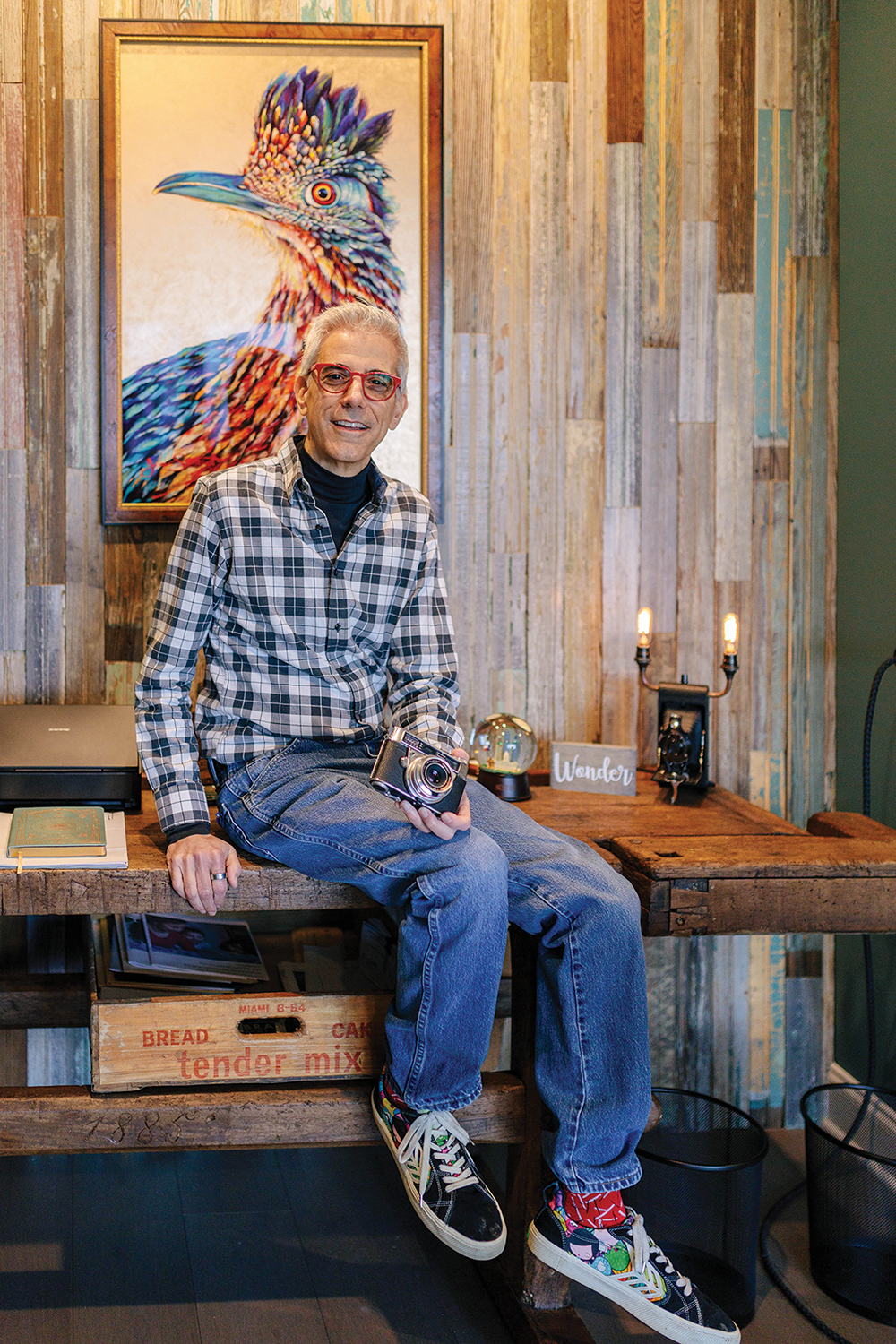
Mark Salmanson at home in Kenmure with his camera collection (Painting by Jen Starwalt).
Photo by Rachel Pressley
Even on a drizzly day, the view through the floor-to-ceiling windows that form the rear wall of Mark Salmanson’s home in Flat Rock will stop a visitor in their tracks. “We bought the view,” Salmanson says. “The house came with it.”
Salmanson shares the Kenmure home with his wife Tracy Robinson. Together, the couple scout out large antiques and the work of local artists: mostly turned and carved wooden vessels. But the items he’s collected on his own are of a different oeuvre: fun, even campy. They include a 1992 pinball machine and a 1950 Seeburg jukebox (both fully operational); the rotary phone that sat on his grandfather’s desk in Breckenridge, Texas; and the pink Zenith transistor radio his mother took with her to summer camp.
But it is Salmanson’s vintage cameras that hold a place of honor in the living room, artfully displayed on four floating shelves built by sculptor Holland Van Gores of Brevard. And that’s far from the entirety of the collection, he admits. “There’s more in my study and more in the primary-bedroom closet. In Texas, I had them all out, but before we moved in here, my wife suggested I pick a few favorites for display.”
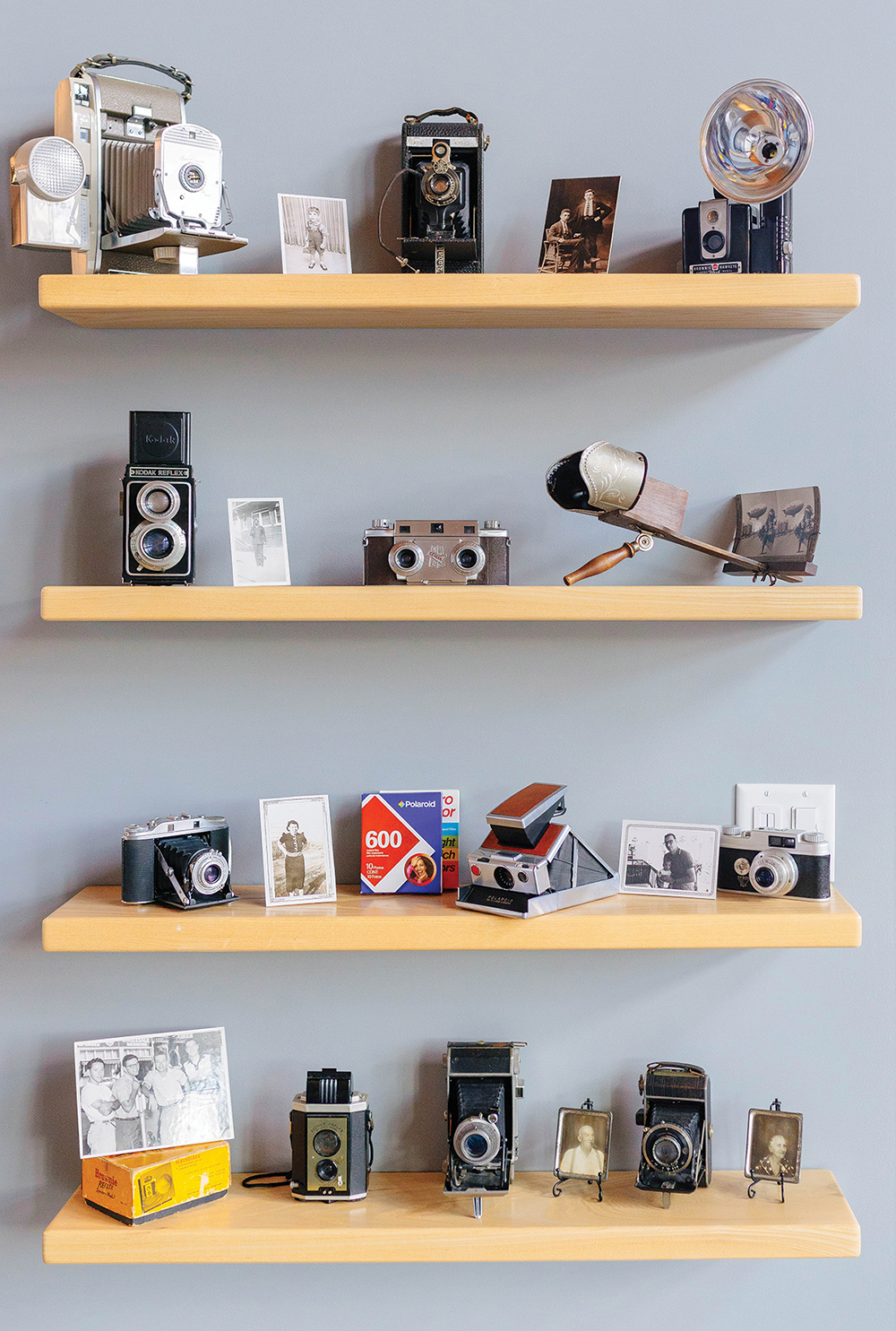
Photo by Rachel Pressley
Many of those favorites have been in Salmanson’s possession for years, and in the family for decades before that. “My maternal grandfather always had a camera with him and was always taking photos,” he says. “There were cameras around his house that I saw when I spent time in the summers there. As new cameras came out, he upgraded, and the older ones got pushed to the back of a closet.”
One of the oldest to emerge from that closet is his grandfather’s stereoscopic camera with two matching lenses that resemble binoculars; the result was a two-image print on postcard-grade paper, which, when seen through a viewfinder, revealed a 3-D image. Salmanson found the antique stereoscopic viewer at a local shop and displays it next to the camera. “You could pass it around at gatherings, and it gave people a new way to look at photos.”
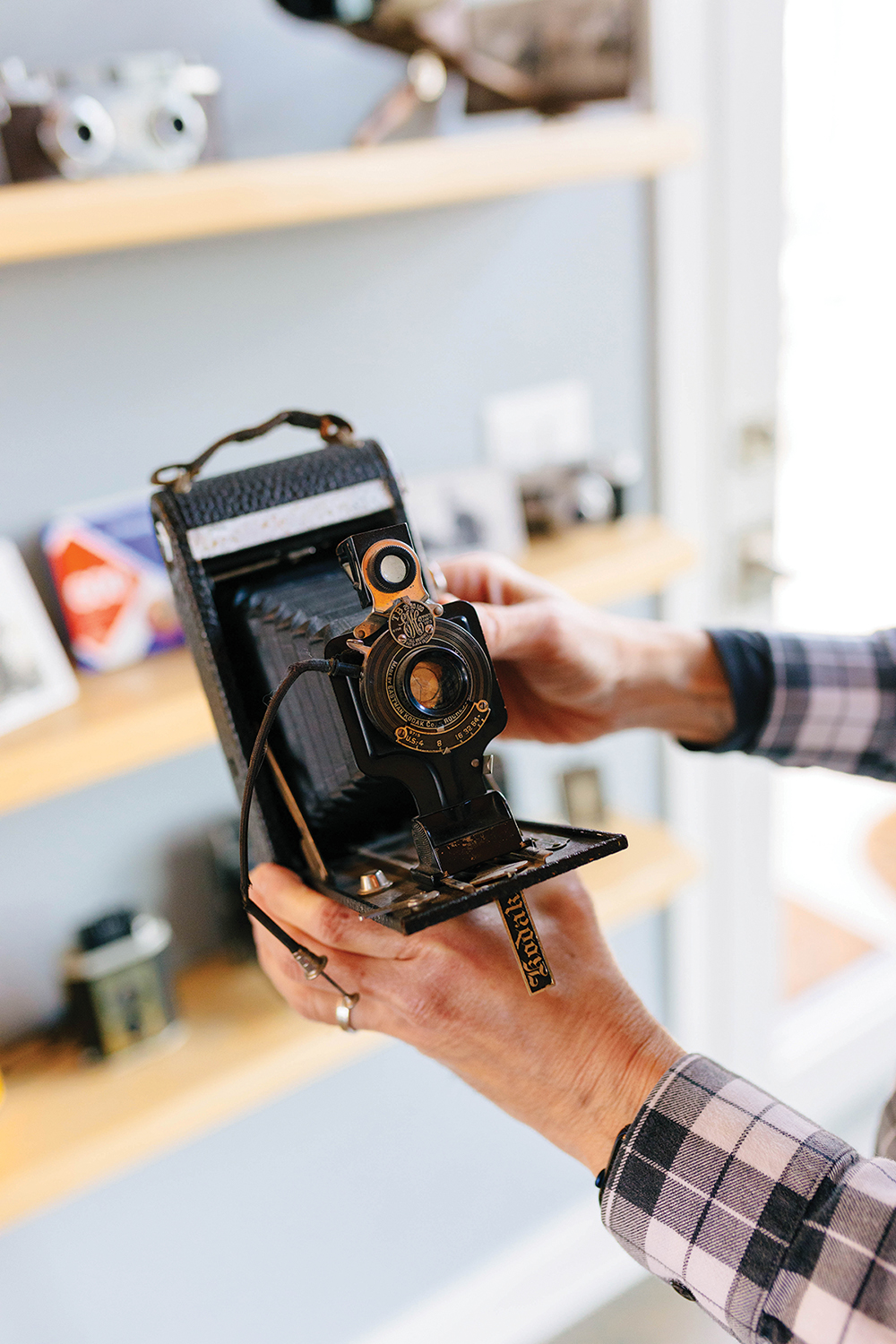
Photo by Rachel Pressley
Salmanson recalls that by the time he was a boy, his grandfather had segued to slides, producing the interminable slideshows projected onto home screens all over America. “In his later years, he traveled quite a bit and took these beautiful slides of stunning mountains and gorgeous streams, but unfortunately, he didn’t identify them. We have no way of knowing if it was a mountain down the road or Mount Pilatus in Switzerland.”
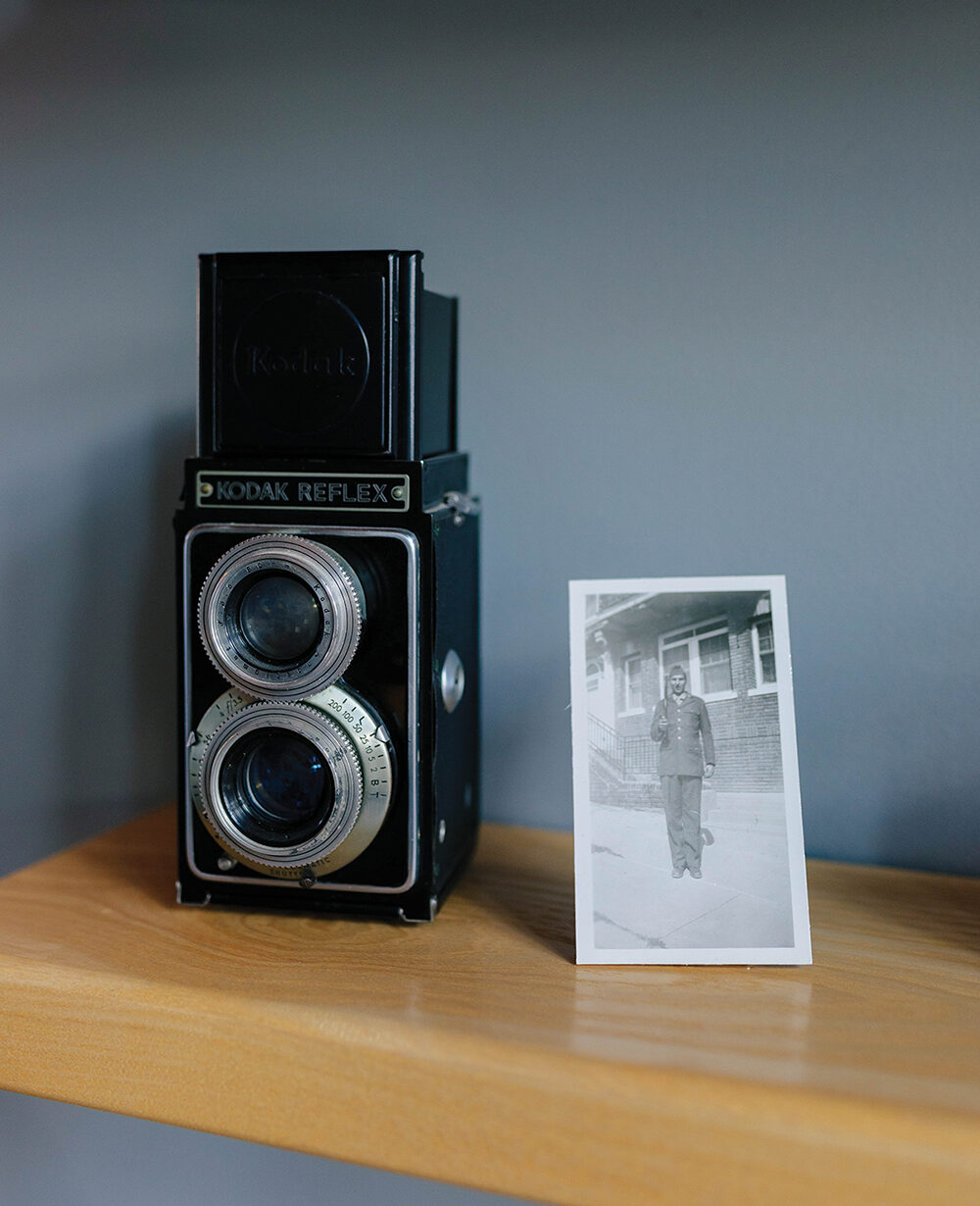
Photo by Rachel Pressley
Had his grandfather used the unusual Kodak Autographic camera in Salmanson’s collection, future generations would have known. “These were used a lot during World War I. A little door in the back of the camera slides down, a stencil pops out, and you could write ‘Yellowstone Park 1914’ on it,” he explains. “The writing burned into the negative, and when the photo was developed, showed up in white at the bottom of the picture.”
Before he recently retired, Salmanson was a technology consultant, but ironically, he remains fascinated by the attainments of low tech: all the ways humans have dreamt up to make things work. “We get so excited by the features on our iPhones, but really, it’s just old stuff made new again and packaged differently,” he points out. “At the end of the day, it’s still a telephone, and now it’s a camera, too.”
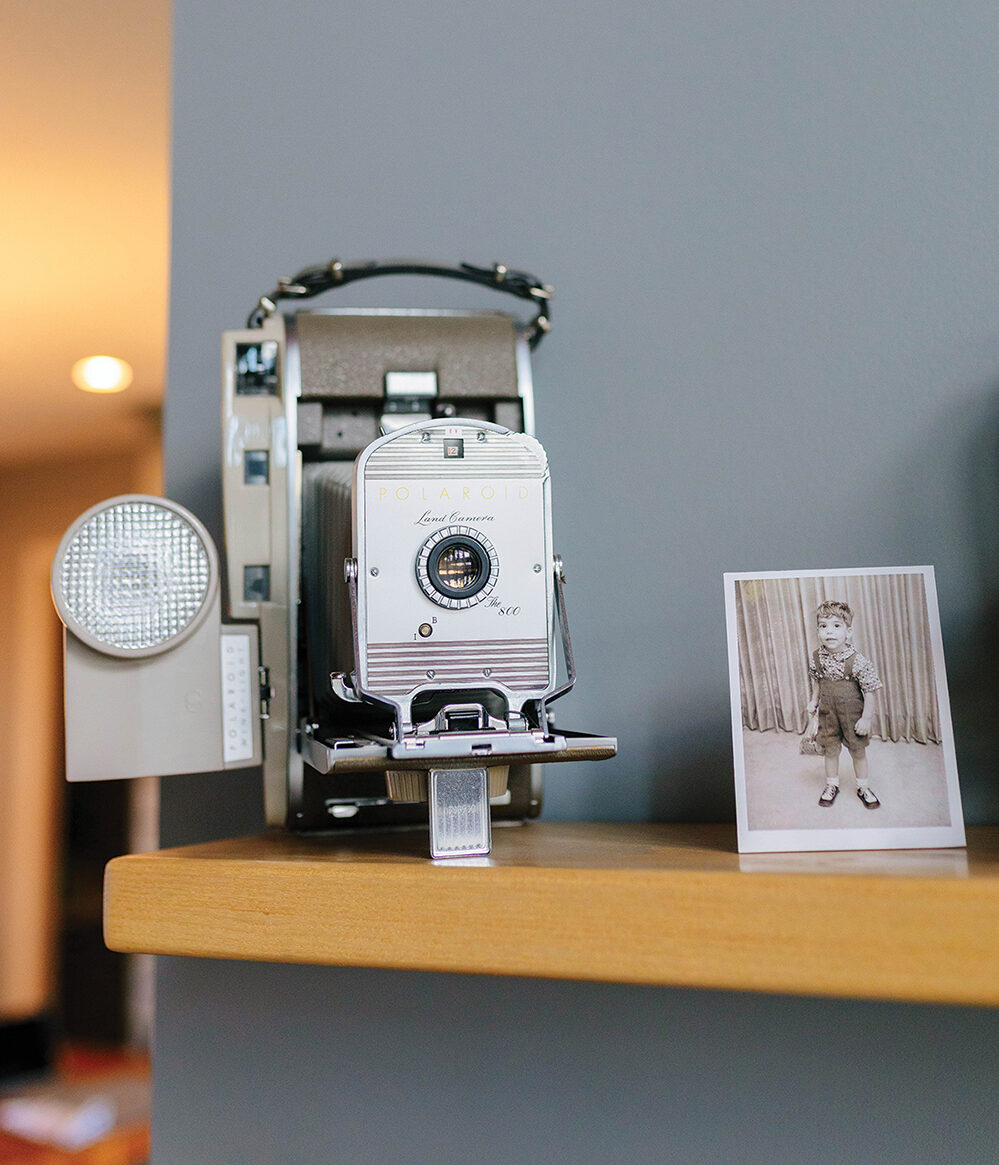
Photo by Rachel Pressley
It was his mother’s childhood box Brownie camera that began the collection. “They were very popular. You held it at waist level and looked down into it. I found the flash attachment in a store in Fletcher.” On the top shelf is an early — and very large — Polaroid camera his father purchased when his mother was pregnant with him.
Not all are family heirlooms, though. Some cameras find their way to him. “The doorbell rings and it’s a neighbor who has cleaned out a relative’s house and found old cameras in the attic. Just last week someone brought me a big Kodak Duaflex IV still in the box, and a tiny, pocket-sized Hartex miniature.”
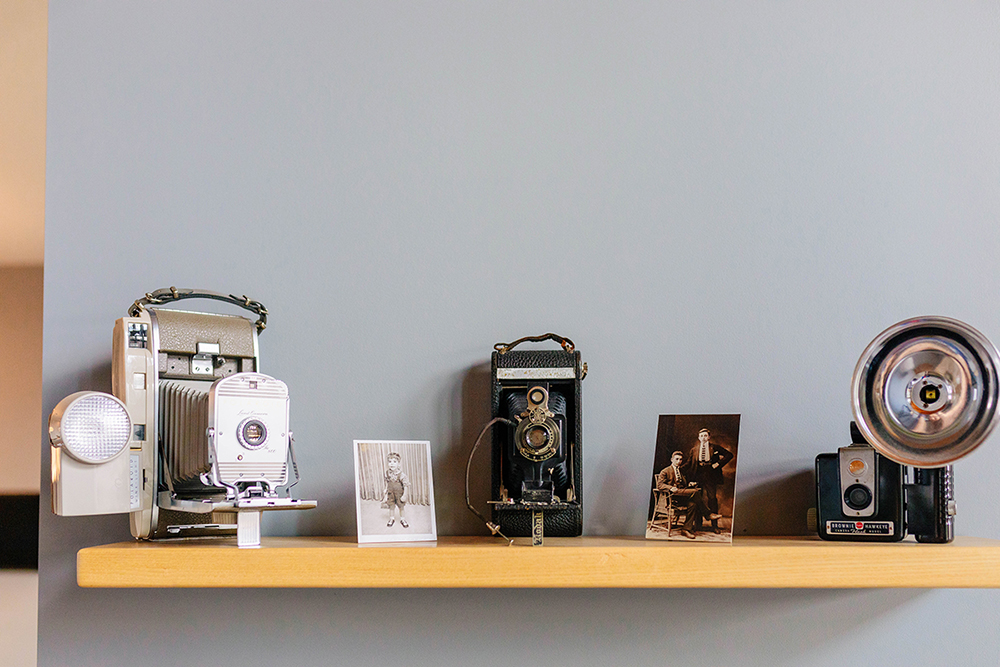
Photo by Rachel Pressley
Along with equipment, Salmanson inherited the thousands of photos taken by his grandfather and other family members. Black-and-white portraits are framed and hung on a hallway wall, some small images placed beside the vintage cameras that captured them.
Beyond all the ingenuity is the emotional response. “I am just moved by the thought that these cameras have been witness to so many happy times.”
